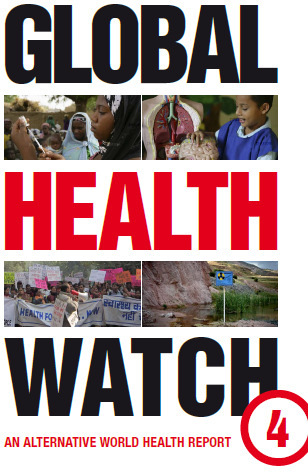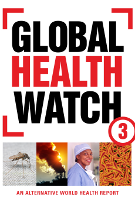8.3 Poliomyelitis: intensification of the global eradication initiative
Key documents
Poliomyelitis: intensification of the global eradication initiative (EB132/17)
Secretariat note
PHM comment pre-EB
This document is an update on the progress made and challenges experienced in implementing the global and national emergency action plans against poliomyelitis, as well as the new six year polio eradication and endgame strategic plan (in response to the resolution WHA65.5 to complete the eradication of poliovirus). The report states that ‘new performance monitoring systems have been put in place (i) to track whether supplementary immunization activities using oral poliovirus vaccine were reaching the vaccination coverage thresholds required to interrupt transmission and (ii) to guide rapid corrective action’. The majority of the report is focused on initiatives to expand vaccination, including withdrawal of the oral vaccine for the injectable vaccine, and negotiation of reduced prices for injectable vaccines.
Highlighting the need to withdraw the type 2 component of oral poliovirus vaccine, in 2012 it was detected that five outbreaks of poliomyelitis were due to circulating type 2 vaccine-derived polioviruses. The outbreaks left 37 children paralysed in Chad, Democratic Republic of the Congo, Kenya, Nigeria, Pakistan and Somalia. Two of these outbreaks, in Nigeria and Somalia, involve the continuing transmission of a type 2 virus for a period exceeding 36 months.
The report neglects attention to basic sanitation and clean water, as noted similarly in the draft proposal on neglected tropical diseases. It also operates a vertical programme outside public health systems, and can draws resources away from the public system -- it is conceived in neglect of fragile health systems – similar to the International health regulations.
Report of discussion
During the discussion, both the Director General and the Member States (MS) expressed their condolences for the deaths of health workers in Pakistan who were killed for administering polio vaccines and strongly condemned this despicable act.
Commenting on the report, MS thanked the WHO and the Secretariat for their effort in producing document. The US delegation said they have mentioned the example of two recent cases in Egypt where analysis traced the cases to Pakistan. In this regard, the US urged countries to fully implement the WHO recommendations for international travellers. The US further said countries should deny access to travellers who refuse vaccinations.
Panama appealed to donors to unite and increase efforts for this urgent task. Morocco said despite the progresses, many countries still find it difficult to align with the plan put forward. In this regard, it urged MS to fight political and socioeconomic factors that hinder vaccination.
The African region said they are mindful of the risks of the spreading of wild Polio virus. The delegation said Africa welcomes the development of the comprehensive strategy. The region called for technology transfer and regular consultation especially with end users of new vaccines. Furthermore, the region welcomed stockpiling and containment measures, and encouraged continued consultation with all the stakeholders.
SEARO mentioned the risks of importation, the gaps in coverage and the funding shortfalls, and affirmed that they are looking to continue routine and supplementary vaccination and avoid cross-border contamination. In this regard, they asked for more technical and funding support to achieve this goal.
The EURO countries asked which strategies are put in place for reducing risks and ensuring the security of health workers. They expressed interest to continue the discussions with vaccine manufacturers for increasing the accessibility and affordability of polio vaccine (IPV). They affirmed the importance of mainstreaming polio eradication activities into existing public health program. They noted the funding challenge, but said MS need to unite efforts to eradicate polio.
Other MS called on WHO to continue its support on polio and fully implement International Health Regulations with regards to this.
Particularly, China said that information and data sharing using national and regional cooperation, especially in countries with outbreaks, is crucial. They suggested that WHO establishes transitional periods to those introducing IPV, and affirmed that WHO needs to support R&D on IPV and its use, and needs to finance policy update on routine immunization.
Australia also expressed support for the work of countries with live polio saying that a combined emphasis on strengthening routine vaccination and Supplementary Immunization Activities is crucial. They expressed support for the endgame saying that it’s achievable and right.




